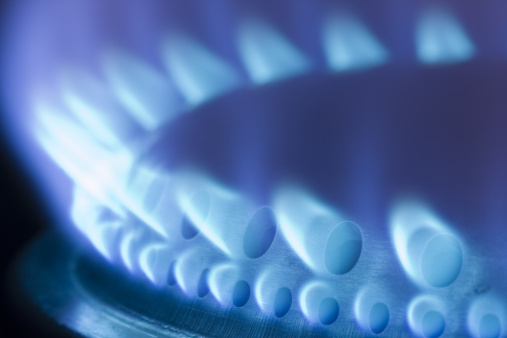
The EIA reported that U.S. working stocks of natural gas totaled 2.4 trillion cubic feet, about 361 billion cubic feet higher than the five-year average of 2.04 trillion cubic feet. Working gas in storage totaled 2.64 trillion cubic feet for the same period a year ago.
Weather forecasts for the next 10 days call for colder temperatures in the Midwest. Low temperatures in the east earlier this week caused a jump in spot natural gas prices on most of the major pipelines serving the region.
Here’s how stocks of the largest U.S. natural gas producers are reacting to today’s report:
Exxon Mobil Corp. (NYSE: XOM), the country’s largest producer of natural gas, is down 0.2%, at $88.79 in a 52-week range of $77.13 to $93.67.
Chesapeake Energy Corp. (NYSE: CHK) is up 0.8%, at $20.41 in a 52-week range of $13.32 to $26.09. The company reported earnings this morning before markets opened.
EOG Resources Inc. (NYSE: EOG) is down 1.3%, at $125.72 in a 52-week range of $82.48 to $138.20.
The U.S. Natural Gas Fund (NYSEMKT: UNG) is up 0.2%, at $18.36 in a 52-week range of $14.25 to $23.38. The Market Vectors Oil Services ETF (NYSEMKT: OIH) is down 1.6%, at $42.67 in a 52-week range of $32.54 to $45.14. The first fund tracks spot prices; the second includes major drillers and services companies.
Is Your Money Earning the Best Possible Rate? (Sponsor)
Let’s face it: If your money is just sitting in a checking account, you’re losing value every single day. With most checking accounts offering little to no interest, the cash you worked so hard to save is gradually being eroded by inflation.
However, by moving that money into a high-yield savings account, you can put your cash to work, growing steadily with little to no effort on your part. In just a few clicks, you can set up a high-yield savings account and start earning interest immediately.
There are plenty of reputable banks and online platforms that offer competitive rates, and many of them come with zero fees and no minimum balance requirements. Click here to see if you’re earning the best possible rate on your money!
Thank you for reading! Have some feedback for us?
Contact the 24/7 Wall St. editorial team.



